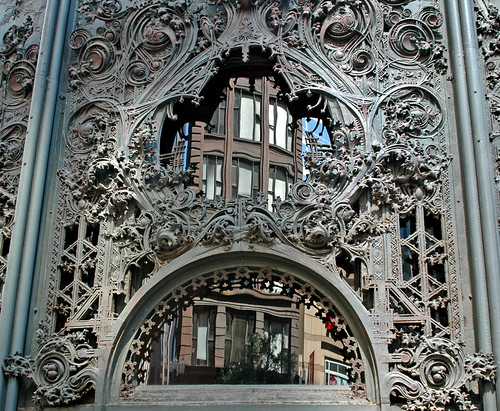I know, I'm the most consistent blogger you know. Definitely a personality flaw I'll spend the rest of my life working on. Not enough self-discipline and utter shamelessness- these are the characteristics of a woman bound for rise and riches. Or, street spelunking (strumpetisms).
My biggest summer inspiration was my History of Graphic Design class (great textbook choice, I'm going to buy this for my library when I can: Megg's History of Graphic Design ). This class was instrumental in helping me describe my reasons for loving design beyond "I like visual synthesis and beauty" and "I try to make information accessible". Beyond communicating ideas visually, design facilitates further understanding and expansion of ideas... much more dynamic than fitting puzzle pieces together.My teacher, Instructor Allard, posted a great page online summarizing the different levels of design understanding.~~~
THE LEVELS OF DESIGN CONSCIOUSNESS
DESIGN AS FRAMING - Design redefines the challenges facing the organization. Framing sets the agenda, outlines the boundaries and axes of interest, and moves design from executing strategy to shaping strategy. Disruptive innovation lives here.
DESIGN AS PROBLEM SOLVING - Design finds new opportunities by solving existing problems. Design process generates alternatives within a problem space. Design also narrow down those options to a specific solution.
DESIGN AS FORM AND FUNCTION - Design makes things work better. This is the classic practice of design - but it's still commonly limited to incremental improvements through iteration over existing solutions.
DESIGN AS STYLE - Design is the gateway to be hip and cool. Design is stylish, but too often is percieved and practiced as a cosmetic afterthought.
DESIGN AS NO CONSCIOUS DESIGN - Design value isn't recognized. This attitude fosters design by default - however things come out is fine, because there are more important issues to deal with.
~~~
Note that it reads "Form and Function" instead of "Form follows function". The saying "Form follows function" has been bastardized, misinterpreted to mean that form is secondary and unnecessary. But Louis Sullivan, creator of the phrase (originally "Form ever follows function"), never adhered to such dogmatic definition... as evidenced by his Art-Nouveau influenced ornamentation on the Carson, Pirie, Scott and Company on South State Street in Chicago.


